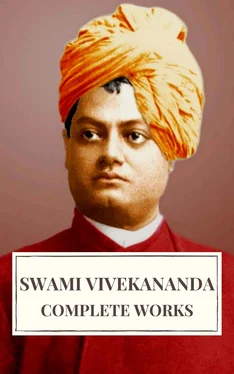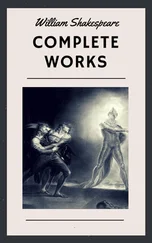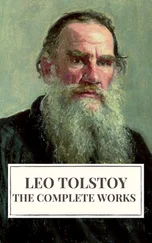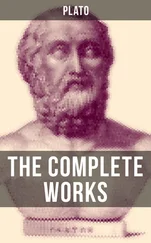When there is real purification of the body, external and internal, there arises neglect of the body, and the idea of keeping it nice vanishes. A face which others call most beautiful will appear to the Yogi as merely animal, if there is not intelligence behind it. What the world calls a very common face he regards as heavenly, if the spirit shines behind it. This thirst after body is the great bane of human life. So the first sign of the establishment of purity is that you do not care to think you are a body. It is only when purity comes that we get rid of the body idea.

41. There also arises purification of the Sattva, cheerfulness of the mind, concentration, conquest of the organs, and fitness for the realisation of the Self.
By the practice of cleanliness, the Sattva material prevails, and the mind becomes concentrated and cheerful. The first sign that you are becoming religious is that you are becoming cheerful. When a man is gloomy, that may be dyspepsia, but it is not religion. A pleasurable feeling is the nature of the Sattva. Everything is pleasurable to the Sâttvika man, and when this comes, know that you are progressing in Yoga. All pain is caused by Tamas, so you must get rid of that; moroseness is one of the Exults of Tamas. The strong, the well knit, the young, the healthy, the daring alone are fit to be Yogis. To the Yogi everything is bliss, every human face that he sees brings cheerfulness to him. That is the sign of a virtuous man. Misery is caused by sin, and by no other cause. What business have you with clouded faces? It is terrible. If you have a clouded face, do not go out that day, shut yourself up in your room. What right have you to carry this disease out into the world ? When your mind has become controlled, you have control over the whole body; instead of being a slave to this machine, the machine is your slave. Instead of this machine being able to drag the soul down, it becomes its greatest helpmate.

42. From contentment comes superlative happiness.

43. The result of mortification is bringing powers to the organs and the body, by destroying the impurity.
The results of mortification are seen immediately, sometimes by heightened powers of vision, hearing things at a distance, and so on.

44. By the repetition of the Mantra comes the realisation of the intended deity.
The higher the beings that you want to get the harder is the practice.

45. By sacrificing all to Ishvara comes Samadhi.
By resignation to the Lord, Samadhi becomes perfect.

46. Posture is that which is firm and pleasant.
Now comes Asana, posture. Until you can get a firm seat you cannot practice the breathing and other exercises. Firmness of seat means that you do not feel the body at all. In the ordinary way, you will find that as soon as you sit for a few minutes all sorts of disturbances come into the body; but when you have got beyond the idea of a concrete body, you will lose all sense of the body. You will feel neither pleasure nor pain. And when you take your body up again, it will feel so rested. It is only perfect rest that you can give to the body. When you have succeeded in conquering the body and keeping it firm, your practice will remain firm, but while you are disturbed by the body, your nerves become disturbed, and you cannot concentrate the mind.

47. By lessening the natural tendency (for restlessness) and meditating on the unlimited, posture becomes firm and pleasant.
We can make the seat firm by thinking of the infinite. We cannot think of the Absolute Infinite, but we can think of the infinite sky.

48. Seat being conquered, the dualities do not obstruct.
The dualities, good and bad, heat and cold, and all the pairs of opposites, will not then disturb you.

49. Controlling the motion of the exhalation and the inhalation follows after this.
When posture has been conquered, then the motion of the Prana is to be broken and controlled. Thus we come to Pranayama, the controlling of the vital forces of the body. Prana is not breath, though it is usually so translated. It is the sum total of the cosmic energy. It is the energy that is in each body, and its most apparent manifestation is the motion of the lungs. This motion is caused by Prana drawing in the breath, and it is what we seek to control in Pranayama. We begin by controlling the breath, as the easiest way of getting control of the Prana.

50. Its modifications are either external or internal, or motionless, regulated by place, terns, and number, either long or short.
The three sorts of motion of Pranayama are, one by which we draw the breath in, another by which we throw it out, and the third action is when the breath is held in the lungs, or stopped from entering the lungs. These, again, are varied by place and time. By place is meant that the Prana is held to some particular part of the body. By time is meant how long the Prana should be confined to a certain place, and so we are told how many seconds to keep one motion, and how many seconds to keep another. The result of this Pranayama is Udghâta, awakening the Kundalini.

51. The fourth is restraining the Prana by reflecting on external or internal object.
This is the fourth sort of Pranayama, in which the Kumbhaka is brought about by long practice attended with reflection, which is absent in the other three.

52. From that, the covering to the light of the Chitta is attenuated.
The Chitta has, by its own nature, all knowledge. It is made of Sattva particles, but is covered by Rajas and Tamas particles, and by Pranayama this covering is removed.

53. The mind becomes fit for Dharana.
Читать дальше

























